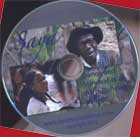
Saya: Dance and Survival in an Afro-Bolivian Village 2012
Distributed by Landlocked Films, LLC, 1505 Mariposa Ave., Boulder, CO 80302; 303-447-2821
Produced by John Tweedy & Beret Strong
Directed by John Tweedy & Beret Strong
DVD , color, 22 min.
Sr. High - General Adult
Human Rights, African Diaspora, Dance, Cultural Studies
Date Entered: 06/04/2013
Reviewed by LaRoi Lawton, Library & Learning Resources Department, Bronx Community College of the City University of New YorkThis story is told in Spanish with English subtitles and takes place in Tocana, Bolivia, a former 16th century slave plantation. The story relates how many of the current natives, descendants of Africans brought to Bolivia in 1the 16th century and in 1826, were granted their freedom if they could pay their purchase price to their owner. This was next to impossible, so the feudal-slave system lasted until 1952 when land reform at last freed Afro-Bolivians from bondage. Today, African descendants still fight for equality and acceptance in Bolivian society despite having lived in this country for 500 years.
Today, this group is fighting for social and economic equality on several levels. Many of these people have their master’s last name that was given to them centuries ago. Life on the plantations today where coca is produced is very harsh even though unpaid work was abolished in 1952.
Saya represents the musical expression of this group that is shown performing the “Saya” dance in the plaza of a nearby tourist town before an audience of local Indians, affluent visitors from the Bolivian capital of La Paz, and foreign tourists. The film highlights the attendant problems of cultural survival and emergence for an endangered subculture in an era of global saturation. This film invites dialogue with those elements of Bolivian society as well as foreigners who still have racist and classist attitudes towards many people portrayed in this group. The film explores the efforts of this community/village as it attempts to look for better acceptance for themselves and future generations. More importantly they want their children to understand their parent’s history whether through the song, or through the steps of the dance. Above all, Saya for these Afro-Bolivians represents a struggle from their past, their present and future as fully recognized people of Bolivia with all the attendant rights of a civilized society.